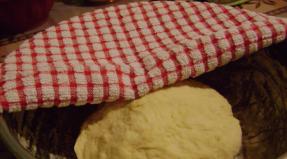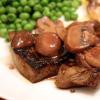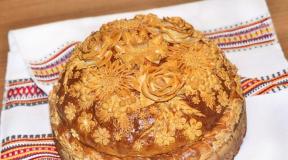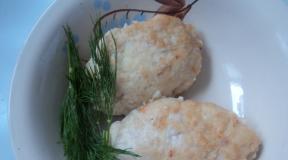Etiquette: basic general rules of conduct at the table.
It will not hurt each of us to brush up on the rules of etiquette at the table, and perhaps even learn something new about how to behave while eating. The most important rules of etiquette that absolutely everyone should follow.
Each of us notices when in a cafe at the next table someone is eating sloppily or furtively wiping their hands on their knees. In the same way, other people notice our mistakes, any behavior is conspicuous and can cause embarrassment. Therefore, it is better to test yourself and correct your own behavior if necessary.
How to behave at the table
General rules apply to any situation, they will never be superfluous. The first thing we pay attention to when we see a person is his posture. Posture characterizes not only the behavior or state of a person, but also reveals the secrets of his character.An insecure person will nervously fidget on the edge of a chair, a notorious person will try to slouch over to become less noticeable. Sit up straight, but in a way that is comfortable for you. Hands can be placed on the edge of a table or on your knees, and your elbows are best pressed to your sides.
By the way, in order to learn how to hold your elbows near the body in Soviet times, it was advised to periodically train - to have lunch, holding a couple of weighty books with your elbows. This is necessary in order for the correct body pattern to form, and you kept your elbows flawlessly even when you do not think about it at all.
The rules of table etiquette imply almost all situations that can happen to a person and give a clear recommendation on how to act in a given situation.
Naturally, table etiquette at home and restaurant etiquette are somewhat different.However, there are rules that are appropriate in any situation:
- do not talk too loudly;
- you can not take a fork or spoon with food too far from the mouth;
- you can not make sounds while eating;
- you should eat calmly, without unnecessary haste.
A restaurant
The rules of conduct in a restaurant imply some concentration - you need to behave correctly and with dignity in order to make a pleasant impression on others.- A man should let the lady go ahead, but if a company of men or women is sent to a restaurant, then everyone is on an equal footing or rely on the initiator of the dinner.
- If several people are to meet at dinner, and some are late, then by mutual agreement with the rest of the guests, you can wait for those who are late for about a quarter of an hour. A longer wait is a sign of disrespect for guests arriving on time.
- If you happen to be late, then you should apologize, and then just join the rest. You should not draw special attention to the fact of being late and explain the reason, just join in the table conversation.
- During a meeting between a man and a woman in a restaurant, the man should read the menu and offer his companion any dishes. For a girl in this case, expressing her indifference is a sign of bad manners. Restaurant etiquette implies the participation of the lady in the choice of dishes.
- In a restaurant, you should not conduct a conversation in a raised voice and laugh out loud. If this happened by accident, it makes sense to apologize to other visitors and be quieter. Observe etiquette at the table, and if someone behaves inappropriately at the next table, then you should inform the waiter about it.
- You need to start eating when the waiter brought the ordered dishes to everyone present. If the person who is waiting for the preparation of his dish does not mind, he can make an offer to others to start the meal.
- It is categorically impossible to engage in hygienic procedures at the table - wipe your face, neck and hands with napkins, comb your hair or tint your lips. If you need to pay attention to your appearance, it is better to do this in a special room. Table etiquette also discourages lipstick marks on dishes. Before starting to eat, the girl must carefully remove the lipstick with a napkin.
- Any interaction with food also looks uncultured - food is on the table in order to eat it. Taking photos for Instagram, blowing on soup, picking at a salad, commenting on ingredients is indecent.
- If you find cartilage or bone in a dish, you need to carefully return the inedible element back to the spoon and transfer it to a plate (or napkin).









How to handle the instruments
- In no case should you check the cleanliness of the devices, and if you nevertheless notice a cloudy speck on a fork or spoon, you should quietly draw the waiter's attention to this oversight and politely ask them to replace them.
- In most restaurants, the table is set in advance and the cutlery is laid out on either side of the serving plate.
- Do not get lost if there are more dishes on the table than you expected to see - everything has its purpose, and if you are in doubt about which fork or spoon to take, then you can always see how the rest of the guests will solve this problem.
- Those devices that lie on the left of the plate are used with the left hand, and those that are laid out on the right must be held in the right hand.
- With complex serving, each dish relies on its own devices, so if you are in doubt which fork to take, take the farthest fork - the one farthest from the edge of the plate. As you change dishes, you will gradually get closer to the closest appliances.
- The knife is used either for cutting food or for spreading pates and butter (for example, during breakfast). Do not try pieces from a knife.
- Meat or fish should be cut sequentially as they are eaten. Chopping the whole portion at once is bad taste. It is generally accepted that this way the dish cools down faster and loses its main flavor nuances.





Forks
- second hot dishes are eaten with a table fork, it has four cloves, and in length it is slightly inferior to the diameter of the plate and is placed on the left;
- a fish fork is used for hot fish dishes, looks smaller than a snack bar and has four short teeth, a fish fork is easy to recognize by the indentations - they are needed to separate the bones;
- a snack fork - a reduced duplicate of a table fork, they eat cold snacks with it;
- dessert fork - for pies, small, corresponds to the size of a dessert plate and looks atypical;
- a fruit fork equipped with two prongs, usually served with a fruit knife;
- the rest of the forks are considered auxiliary, they are placed next to the dish that they need to be eaten.
Knives
- any second hot dishes are eaten with a table knife, it is placed to the right of the plate, the blade is turned towards the plate;
- the fish knife is dull and resembles a shoulder blade, used to separate the flesh of the fish from the bones;
- the snack knife is small and has teeth;
- the dessert knife and fruit knife look similar - they are the smallest.
Spoons
- a tablespoon - the largest, lies to the right of the plate;
- a dessert spoon is served with a dessert that does not require cutting - soft puddings, jellies and whipped cream;
- an ice cream spoon is served with a bowl;
- the cocktail spoon has a very narrow and long handle;
- a teaspoon can be served with any hot drink;
- coffee spoon - the smallest, served only with black coffee.

Dialogue and table behavior
Drinking etiquette involves not only the use of instruments, correct positioning and good posture, but also the manner of conducting dialogues and conversations.It is worth noting that table etiquette categorically prohibits discussing provocative issues that can lead to serious conflict - therefore, you should refrain from commenting on money, politics and religion.
How to behave at the table and what to say? Be sure to look at the one who addresses you, listen without interrupting, and only then answer. If you find any of the other person’s questions unsuitable for eating, delicately offer to discuss it a little later. In all other cases, you should answer easily and naturally.
The restaurant also does not imply violent disputes - refrain from inappropriate comments and defuse the atmosphere with a cute joke if someone else raises their voice.
You should not talk only together, involve the rest of the participants in the conversation... For example, if the conversation comes about a recently spent vacation, you can ask one of the interlocutors whether he is going to go on vacation in the near future or what places he prefers to rest.
It is also good form in any table conversation to praise the host, cook or initiator of the meeting - find a few kind words to mark the general atmosphere of the evening.






Short Course in Etiquette
- Do what most do.
- Don't tell others about their mistakes, in the most extreme case, this can be said quietly in an undertone and only to your neighbor at the table.
- Don't be away from your meal for a long time.
- Leaving the table - apologize.
- Try everything and eat what you like.
- Diet, eating disorders, alcohol restrictions, and eating habits are not discussed at the table.
Table etiquette is not so difficult if you take a little time to it, and following all the rules will help you present yourself as your best side.
- Don't put your fingers in your mouth or get food out of your teeth. Apologize and go to the bathroom.
- Don't overload your plate at the buffet.
- If you get something indecent (belching, hiccups), or if excess food falls out of your mouth, then calmly apologize. Do not make an elephant out of a fly and no one else will focus on this.
- Don't talk with your mouth full.
- Don't tilt your face down into the plate. Instead, sit up straight and bring the cutlery to your mouth.
- If you have any chewing gum, discard it before meals. It is considered bad form to stick it under the table.
- Don't take something last until you ask if someone would like to take it.
- Leave food on the plate that you don't want.
- Chew with your mouth closed.
- If you need to leave the table, say "I'm sorry." Needless to say where you are going.
- When eating or cutting something, keep your elbows close to your body.
- Don't make noise, sing, or whistle at the table unless everyone else is doing it.
- Do not tilt the back of your chair.
- Don't add salt to your food if you don't need to.
- They never criticize others' eating habits in public.
- If you have used the cookware before, do not touch it again! Leave food on your plate.
- Bring food to your mouth, not your mouth to your plate.
- Sit up straight.
- Don't push the plate away when you've finished eating.
- Do everything for the owner. For example, don’t sit down, don’t start eating, or leave the table until he does it first, or asks you to do it.
- Take a glass as you drink through the straw.
- Do not dip the spoon twice in the common dish.
- When people leave the table, do not ask them where they are going.
- Don't embarrass yourself or the owner.
- Don't interrupt someone; it makes an unpleasant impression.
- Do not speak with food or drink in your mouth.
- While resting, you can rest your elbows on the table, placing them between the dishes. But only after eating, not during it.
- Don't talk about unpleasant things at the table.
- The glasses are different. One, which is rounder, is used for red wine, and the other, taller, is used for white wine. Hold the white wine glass by the stem to avoid heating it, and hold the red wine glass by the bowl, as red wine tastes better when it is warmed by the warmth of your hands.
- When it comes to plates of bread, cups, etc., while dining at a large table with other people, many people wonder which one belongs to them. Always take what's on the left.
- If you make a loud noise and drop a spoon (or something like that), do not draw attention to it. Most likely, no one noticed, or even paid attention.
Young parents do not always take the advice of their elders in raising children seriously, and teaching their baby the rules of behavior at the table is considered the tenth thing. So it comes down in some families to completely non-pedagogical shouts: "Do not chomp, close your mouth and chew, sit up straight, do not swing in a chair, do not grab from the table until lunchtime ..."... On this they consider their mission completed. And the grandmother knows for sure that in a few years, parents will have to blush for such an ignoramus. Or another situation, the kid has been poking around in the soup for half an hour, chooses what he likes best from there, eventually pushes the plate away, spilling the contents on the floor, on the table and on himself ... Is this a familiar situation? Forgiven if the child is only a year old. And if it's already four or five? Where is the line between childish awkwardness and lack of good manners? And when should you start introducing your child to the basics of etiquette? Let's figure out what should be the rules of behavior for children at the table.
Everyone has a few unpleasant moments in their memory when a neighbor's teenager or a kid invited to a children's party just ruined lunch with their behavior. They talked loudly, stretched across the table for the best piece of cake, chomped, or even gagged without chewing food. The list of inappropriate behavior is endless.
Let's save ourselves from similar behavior of a son or daughter in the future. Let's try to systematize teaching our little ones good manners so that it is not burdensome for them or for us. The best age to start studying is 1.5 - 2 years. Naturally, at this age, the child will not be able to understand all the rules of adult etiquette. Yes, it is not necessary.
When to teach? Everything has its time
The rules of behavior at the table for babies are slightly different from adult etiquette, because many hyperactive children become pranksters when they eat. Most children learn good manners by age 5. But you need to start teaching a child as early as 1.5 - 2 years old. Of course, there may be exceptions to the rule, but know that the later you start learning, the more difficult your lessons will be for your child.
We read an article on how to teach a child to eat independently and accurately -
from 1.5 to 5
- At this age, the child is actively mastering the skills of the world around him. He absorbs everything that he sees, tries to imitate adults. It's time to learn the basics of etiquette in a playful way;
- It is mandatory to wash your hands before eating. Mom herself should not forget to wash her hands before feeding the baby. Before each meal, she should go to the bathroom with the baby and wash her hands and herself and him. Over time, it will do this automatically;
- Feeding a child should necessarily take place at the dinner table, and not in the nursery or in front of the TV. This will help your child to take food seriously in the future, to respect the work of those who prepare food. Place the baby on a high chair so that he does not look out from under the table, but feels like an equal member of the family;
- Place a linen napkin on your baby's lap. The clothes will stay clean even if the child spills soup or tea. In adulthood, having a napkin in a restaurant will not put your child into a stupor;
- Do not let your child play with food, crumb bread, or spread porridge on the table. This behavior is not permissible even at 2 years old. Try to patiently explain to the baby that it is ugly to behave so that mom is ashamed of him. Mom and Dad never act like that. Of course, the baby will not listen to you the first time;
- Just one rule: never yell at him. Be patient and consistent in your requirements. It is impossible to forbid something today, and tomorrow not to notice what the child has created;
- By the age of five, children should already be able to handle a fork and knife while they are children. They should not be confused that the knife must be held in the right hand and the fork in the left hand. By this age, you need to teach the child what foods are eaten with the help of devices, and what they are taken with their hands.
from 5 to 10
The most fruitful age for education, but also the most difficult. During this period, the child does not trust the words of the parents so unconditionally. He is already independently trying to understand the life and actions of the people around him.
Mom and Dad should not allow any indulgence for themselves in the ritual of eating. If you teach your child not to drink juices from a bag, but be sure to pour them into a glass, it will be unacceptable to break this rule yourself. Or just forget to wash your hands one day before dinner. Or not thank the hostess for lunch. The child will notice this, and your words will no longer be true for him.
(The picture is clickable, you can copy and print)
Note to moms!
Hello girls) I didn't think that the problem of stretch marks would touch me, but I will also write about it))) But there is nowhere to go, so I am writing here: How did I get rid of stretch marks after childbirth? I will be very glad if my method will help you too ...
At 5 - 6 years old, the baby must learn how to behave at the table and no longer violate accepted norms. Each violation must be discussed with the child at the family council. This will help him understand the seriousness of the demands of adults. But in no case should you conduct debriefing in the presence of strangers, in a derogatory manner, or with the help of shouts and swearing.
- The kid already knows that you need to sit at the dinner table straight, without swaying in the chair. It is unacceptable to spread your elbows and push your neighbors on the table with them. If it is difficult to enforce this rule in words, the book technique is very helpful. During lunch, slip a book under your child's armpit and ask them to hold them until the end of the meal. Several such exercises, and there will be no problems with the elbows;
- The child does not allow himself to chomp loudly, speak with a full mouth. It was constantly suggested to him. He also knows that you need to put small pieces of food in your mouth and chew them thoroughly;
- The kid restrains belching and coughing. If this is not possible, be sure to turn away from the table and cover his mouth with a paper napkin;
- It will be quite natural for a child under 10 years old to know that one cannot consider himself the center of society and with various loud demands to attract everyone's attention to his person. If the baby needs to move away from the table, he must ask permission from one of the parents in a quiet voice, calmly. It is not at all necessary for everyone to know what he wants to use the toilet;
- You cannot reach for the plate at the other end of the table through all the dishes. The child knows to be asked to put the desired piece on his plate. You cannot rummage through a common dish in search of the best piece;
- You can sit down at the table only after adults, and get up - after everyone has eaten. If you don't want to sit and listen to the conversations of adults, the child simply asks for permission to leave;
- Gratitude for the dinner must necessarily manifest itself in the form of the magic word "thank you."
10 and older
You did a good job, taught your offspring excellent manners and etiquette. However, it is too early to relax. He knows what every intelligent person should know and observe. But the rules of good manners and behavior at the table are not limited to this. Ahead is the study of special cutlery not used on a daily basis. It would be nice to acquaint your child with how to eat various exotic dishes. General knowledge about the food traditions of the peoples of the world will not be superfluous.
(The picture is clickable, you can copy and print)
- Do not speak to your child in a didactic tone. For a better understanding of the rules of etiquette, a game form of training is suitable. You can come up with a dinner party for dolls and bears, setting the table with toy dishes according to all adult standards. Of course, your child will be in charge of this lunch. And you will only prompt and advise on time.
- Be consistent and patient in your teaching. Do not allow yourself to get lost on the child, even if he did something impermissible. Remember to praise and support your little one for their success.
- Involve your child in the preparation of the meal. Trust him to arrange the plates, take the bread to the table. Working together will bring your toddler closer and make them respect food and whoever prepares the meal.
- Call on cartoons and fairy tales to help you, which talk about the rules of etiquette. Talk to your child about a scene from a related movie you just saw. Don't skip real life examples. The rules of behavior at the table should be vividly woven into reality, this is not a frozen dogma.
- Your own example is the best lesson. Children always imitate adults. Let's use this for training. Of course, it is not easy to always keep yourself in hand and not allow to grab a piece of tasty food on the fly, but remember about the child.
Why should a child be taught etiquette
Your efforts will not go to waste. Adulthood will very soon become your little one's life. A joint lunch with a potential employer, a visit to a restaurant with a girl you like, a business dinner with partners, a corporate party ... Often the most serious conversations are conducted at the dinner table. Read the article with comments and experiments
Minute video: table etiquette
Psychologists say that it is necessary to teach a child the rules of table etiquette from early childhood: from one to two years:
How to properly sit at the table
Good manners lessons. How to behave properly at the table? How to sit, what can and should not be done at the table? You will learn in good manners lessons:
How Koksik and Shunya learned the rules of table behavior
Note to moms!
Hello girls! Today I will tell you how I managed to get in shape, lose 20 kilograms, and, finally, get rid of the terrible complexes of overweight people. I hope you find this information useful!
Drinking events are an exam for everyone on the knowledge of etiquette and good manners. It is difficult to imagine modern life without going to a restaurant or visiting. Compliance with the rules will help both the guest and the host of the event to appear in society as a well-mannered individual with correctly instilled communication skills.
What it is?
Often the concepts of "ethics" and "etiquette" are equated or combined. Ethics has a broader meaning, speaking of it, one should bear in mind the personal moral and moral values of the individual. Such human traits are brought up from early childhood. Usually, the depth and strength of an individual's morality depends on interpersonal relationships in the family (family model), methods of upbringing, efforts of educational institutions aimed at instilling good manners in schoolchildren, a friendly environment, and personal character traits.

Etiquette is a set of specific rules that any well-bred person must adhere to., these are the norms of behavior adopted by society towards society as a whole or towards a specific individual in particular. You can be a highly moral person with exceptionally correct moral values, but not know good manners. And vice versa.
Table etiquette is the rules of how a person should behave in a restaurant, guests, at a picnic, the order of the relationship between a man and a woman, people of different ranks and ages at such events.
Any educated person should know the basics of table etiquette. Anyone who wants to achieve certain heights in life, to get advancement on the career ladder, to get into high secular circles - must learn and follow the rules of good manners thoroughly.

Standards and regulations
You can highlight the basic elements of how to behave during a feast. Such rules are known and understood by both children and adults. Therefore, you should start instilling good manners in yourself and the younger generation from the following foundations:
- Compliance with etiquette proxemics. Proper placement of guests at the table is important. Thus, the host of the event takes place at the head of the table, all important, honorable and senior guests are seated near the host on the right and left hand, youth and children at the opposite end of the table. Sometimes the youngest are given a separate children's table.
- It is very important to monitor what intonation prevails in the voice during a conversation, the timbre, volume, tone, speed of speech. The voice should sound clear, do not speak too quickly, loud exclamations are unacceptable. You can't talk with your mouth full.
- At the table, you need to monitor your gestures and posture. You cannot lie back on a chair, put your elbows on the table, sit with your hand on your cheek, leg on foot, wave your arms, especially if they have devices in them.
- At the table, you should not start a conversation that could provoke an argument. Politics, religion, health and money are closed topics for conversation. Also, you can not discuss your diet, restriction in alcohol and foods to which you are allergic. You should silently postpone an unsuitable dish, replace alcohol with any other drink.

- A linen napkin should be spread on your knees, so that the clothes are not contaminated, and it is also possible to discreetly wipe your hands on it.
- You can start eating when everyone has food on their plates, and also after the host of the holiday starts eating.
- If during the meal you come across a piece that cannot be chewed or a bone, you should inconspicuously carry the napkin to your lips and take out the inedible element.
- During a feast, you should turn off the phone or put it on silent mode. In no case should you put it next to the plate on the table.
- A woman's purse or clutch should be placed behind her on a chair, a bulk bag - on the floor or hung on the back of a chair. Sometimes restaurants offer a special chair for bags, you can use it. You cannot even put bags and packages on the table for a while.
- If a cutlery or food falls on the floor, do not focus on this, you need to call the waiter and ask them to bring a new one. Do not bend under the table and pick up a fallen object.
- You should not use a toothpick at the dinner table. When there is a pause in the conversation, you need to apologize and leave the table. You can remove the stuck food in the restroom.


The host of the event should not put toothpicks on the dining table, their place during the feast is the bathroom. The same rule applies if it becomes necessary to clear the nose. Blowing your nose at the table while eating is indecent, and besides, this gesture will be unpleasant for other guests.
Good dining manners
Before going to an event, you should know better about its nature. It can help in choosing an outfit, for women - also in choosing a hairstyle and makeup.
If the event is of an official nature, most likely all guests were offered programs. They usually indicate the start time, the time of the entertainment or official part, the time of the buffet and the end of the evening.
Informal feasts are often more intimate and relaxed. Men may neglect ties, and ladies may neglect floor-length evening dresses. However, this does not exempt from the observance of table etiquette.

Date in a restaurant: rules for a man and a woman
Usually at the entrance to the restaurant guests are met by a hostess or head waiter. An employee of the establishment offers his clients free tables and beckons the waiter to take the order. If there is no such position, you can ask any waiter to help you choose a place or decide on your own. The man escorts his lady to her place, usually on the left, helps to sit on the chair.
- The menu is brought by the waiter and gives the guests time to make their choice. The right of primacy in the choice of the dish belongs to the woman. That being said, there is a common mistake women often make. It is categorically impossible to say “Order something to your taste”. Correct interpretation - “Advise what is better to order? ".
- A man makes an order to a waiter after he has listened to the woman's wishes.
- Girls should not choose too cheap dishes, this may be a hint to a man that, in her opinion, he is not wealthy enough. But the choice of the most expensive dishes for a woman can cause unnecessary speculation.

- The specifics of the restaurant should be taken into account. If the event takes place in a Mediterranean restaurant, there is no need to order borscht or dumplings.
- If the choice is difficult, you can call the waiter, clarify what ingredients are present in the dish, what is the cooking time.
- You should not address the waiter on "you", usually the employees of the establishment have a name badge, on which the name is written.
- While waiting for the order, you should start a small-current. The topic of the conversation should be general, you should not go into details and deepen. The interlocutors should look each other in the eyes, speak not loudly so as not to disturb others, and also create an intimate atmosphere for a date.
- While the food is being prepared, the waiter can bring a bottle of wine as an aperitif. The male guest should not uncork it on his own, as well as pour the drink. This is the job of the waiter. You don't have to wait for the waiter to pour the second glass. First the lady is served, then the man can pour a drink for himself. The glass should be filled a little less than half.
- The glass should be held by the stem with three fingers. Thus, it will remain as clean as possible, and this is important for the aesthetic component, which is key in the concept of etiquette.


- To notify the waiter about the change of dish, it is necessary to put cutlery obliquely on top of the plate. A fork and a knife connected at the free end indicate that the meal is not over yet. It should be remembered that putting cutlery on the table after use is strictly prohibited, their place is only on the plate.
- You should not try your partner's dish. The only way to know how it tastes is to order one.
- It is customary in the restaurant to eat slowly, enjoying the taste and process. Even if the feeling of hunger is very strong, you should keep the pace of your partner, otherwise he will perceive it as an escape or a desire to quickly leave the restaurant.
- When dinner is over, the napkin is placed to the left of the plate.
- The gentleman pays first. A woman should not interfere, ask “How much? "Or try to pay your half by investing money in a man.
- If a man and a woman have friendly relations, it is possible to pay a 50/50 check, then the man, having studied the check, tells the woman the amount of her order, and they agree on a tip.


Business meeting
In the modern world, business meetings very often take place in restaurants and cafes. This is especially true during international visits in the interests of business. The host party acquaints partners with the customs and culture of their country. In this case, the invited party should familiarize themselves with the traditions before the event, so as not to offend their partners. Generally speaking, the following rules must be observed:
- First of all, a business meeting is a solution to a business issue. If it does not take place at lunchtime, then you should limit yourself to a cup of coffee or tea.
- When meeting with a partner, you should adhere to the main principle: time is money. You can start solving the issue right after the greeting, without being distracted by small talk.
- After discussing the issue, you should briefly summarize the results of the meeting, if there is time left, move on to abstract topics in order to maintain personal relationships.
- During international feasts, the inviting party pays. If a business meeting is limited to coffee or tea, then everyone pays for himself.

Customs of different countries of the world
Historically, food intake among different peoples of the world has developed in its own way, taking into account national characteristics, the way of life, the influence of the conquerors, cultural and historical facts. In many countries, the rules of etiquette at the table overlap. Thus, a general international etiquette can be distinguished, but there is always a place for originality.
In Russia
Russia is a large international country, which has officially adopted common European norms of behavior at the table. However, given that there are more than 190 nationalities in our country, traveling through it, you can find unusual traditions and norms of behavior at the table.
Among the Tatars, great importance is attached to etiquette proxemics at the table. The head of the family starts the meal first, only then the rest of the family members and guests. They leave the table only when the head of the family has left. Before and after the meal, praise is offered to Allah.


The peoples of the Caucasus have different characteristics. Each family member has his own role, which must be observed without contradiction. It is worth noting an important feature: men and women in the Caucasus do not eat together at the same table. Men eat food first, then women and children.
Any large feast in the Caucasus must have a master - "toastmaster". Toastmaster can be the oldest and honored guest of the event. He says toasts and gives the right to speak to others. A Caucasian feast without toasts is not a feast. They are distinguished by their extraordinary splendor and exaltation of the master's merits.
Among the Mongolian peoples and Buryats, the guest at the table is first offered a bowl of tea or vodka. The guest, taking a bowl, should stick his right thumb into the drink and sprinkle it in the direction of the hearth. It is interesting that such a custom has indeed survived in some places to this day. Of course, the customs of many peoples are gradually weakening, more and more families are beginning to adhere to European standards of etiquette.
However, traveling across vast Russia, one should study the peculiarities of the life of local residents before going to one or another corner of the vast homeland. This knowledge is necessary in order not to offend or offend the owners, as well as to show respect for their culture and traditions.

In France
For those who are lucky enough to receive an invitation to dinner in France, it is worth knowing:
- Lunch and dinner in France always starts with an aperitif, it is selected depending on the region. To drink a glass of wine, the French do not need a reason, they begin to drink a wine drink from adolescence. The wine is matched strictly to the dish that is expected. If the fish is dry white wine, the meat is dry red.
- Usually the French eat out, as it is not customary for them to cook. In cafes, bistros and restaurants, meetings with friends, relatives are held, just a family dinner. Sometimes men and women visit cafes to have a cup of coffee and read a book or newspaper.
- The French are also very fond of family holiday dinners. They usually consist of several servings, each of which contains several dishes. The filing process itself is carried out from right to left.
- While guests are being served a new dish, you should not keep your hands under the table, on your knees - such a gesture can be regarded as distrust. Lower your wrists to the corner of the tabletop.
- Large feasts in the circle of close friends and relatives are held with a complex table setting, all generally accepted norms of etiquette are observed.
- You should carefully consider the use of spices. Do not be too zealous - this can offend the hostess or the cook, as it can be assumed that the dish was not liked, that they want to "embellish" it.
- In France, it is not customary to ask for a wine addition or change. The French believe that only a specific wine can be consumed with a specific dish. Also, do not add ice to a glass of wine. Changes in temperature will affect the experience of the drink, while melting ice will change the taste.
In general, French etiquette has the same basic aspects as in Russia and throughout Europe. In the customs of this country, it is not customary to rush, therefore the French are very attentive to all table rules and strictly observe them, a guest of this country must also show respect for culture and remember about etiquette.
In England
The British are very scrupulous about the observance of etiquette, especially at the table. Even with close friends and relatives, dinner is held according to all the rules of good manners. We can say that the main rule of etiquette in England is the observance of etiquette.

Appliances should be used at the table according to their purpose. The knife is held strictly in the right hand, the fork in the left. It is not allowed to shift the cutlery, in addition, the sharp end of the knife and fork always look towards the plate.
An unusual rule, but if the invited guest is allergic to any ingredient or has special food requirements, you should notify the hosts about this 2 days before the event. At a large table in England, it is unacceptable to have an intimate conversation with only one guest, the topic should be common for everyone, and you should not contact a stranger.
You should not reach across the table to take any dish, you should ask to be passed. However, transferring back is also not supposed to, you must put the plate in an empty place next to you.
Every time a new dish is served to a guest, one should say “thank you”. If there is a common dish on the table, do not put too much on your plate, you need to put so much so that after the end of the feast the plate is clean. Otherwise, the host may think that the guest did not like the dish.


In Korea
In Korea, it is also not customary to leave half-eaten rice or too much from another dish on the plate. Also, do not use a spoon and chopsticks at the same time, stir the soup with the appliances, select certain pieces and separate them from the main course. Everyone should finish lunch at the same time.
Sometimes in Korean restaurants, the waiter serves the table without leaving him. His task is to ensure that guests always have food on their plates. Therefore, a satiated guest needs to leave a small piece of a half-eaten dish, which will be a signal that the addition is no longer required. The same rule applies to drinks.
After the end of the feast, the sticks or spoon should be returned to their original position, where they were lying before the start of the event. The eldest at the table usually pays the bill, not everyone for himself.


In China
The Chinese are very jealous of their traditions and customs, they strictly follow them themselves and are very happy when foreign guests try to adhere to them.
The Chinese begin their meal with flower tea. This drink serves as an aperitif, and also entertains the audience until the rest of the invited guests arrive.
The Chinese, like the Russians, love toast and drink alcohol at the table. During the toast, it is necessary to stand, and after that it is easy to clink glasses with the edges of the glasses. You can only drink from a full bowl, if the glass is half empty, you should wait until the person responsible for filling the drinks fills it.
The Chinese will be very pleased if foreign guests use chopsticks while eating. Moreover, it is not at all necessary to keep them correctly. It is both convenient and correct. However, it is very uncivilized to use such a traditional device for other purposes. Do not use sticks as a pointer, gnaw them, just put them in your mouth. In between dishes, the sticks lie on a special stand, you cannot leave them on the plate, and sticking them into food is offensive.
First, the first courses are served - soups, which are the only portions, then the "main food" - rice or noodles, and dessert ends the evening. You should not lean too much and overeat, a feast in China is an occasion to taste different dishes and enjoy their taste.

In Turkey
Turkish national customs are gradually being supplanted under Western influence. Restaurants and behavior there have completely moved to the rules of international etiquette. But in Turkish houses, you can still encounter the fact that the owners observe the peculiarities of life that personify the history of the country.
For those who have been invited to visit, you should know:
- Coming to a Turkish house, one should take off his shoes on the threshold in front of the door. It is unacceptable to enter a house or apartment in street shoes.
- Turks eat at a low round table, sit in Turkish style on the floor, and hide their feet under the tabletop.
- You should never refuse the offered food, it can offend the owners. Try at least a small bite and compliment the dish.
- Turks serve common meals on a tray. Each guest fills his plate with his hand or spoon. You should not choose the "better" pieces - that is also indecent.
- The meal should be started after the approval of the head of the family.
- The feast usually lasts at least two hours. Turks observe the order of the dishes, therefore, after the main serving, tea, coffee, sweets should be served. They eat leisurely, enjoying the process.
- It is also not worth staying for a long time at a party. You should politely thank for lunch or dinner and leave.

Compliance with generally accepted rules of etiquette is the best proof of good parenting. Good manners will be appreciated in any country in the world. Tourists and foreigners are often forgiven for ignorance of the peculiarities of the traditions and life of the country, but you should not abuse your position.
There are several rules that you should adhere to when visiting a foreign country or in an unfamiliar company:
- You can bring dessert for tea and give it to the hostess when you meet;
- You should not sit down at the table before the host's invitation;
- You should not start eating before the owner starts;
- There is no need to build a mountain of food on your plate, it is better to put a little bit of each dish, eat it, and only then reach for the addition. This method will protect you from overeating, and will also allow you to leave the plate clean after yourself;
- Don't ask too many questions to hosts or other guests;
- You should always be humble and benevolent, be sure to thank the owners and note the culinary talent of the hostess.
In a difficult and incomprehensible situation, adhere to the principle of common sense. The main task is not to cause inconvenience to others, even if you have to sacrifice your well-being.
It will not hurt each of us to brush up on the rules of etiquette at the table, and perhaps even learn something new about how to behave while eating. The most important rules of etiquette that absolutely everyone should follow.
Each of us notices when in a cafe at the next table someone is eating sloppily or furtively wiping their hands on their knees. In the same way, other people notice our mistakes, any behavior is conspicuous and can cause embarrassment. Therefore, it is better to test yourself and correct your own behavior if necessary.
How to behave at the table
General rules apply to any situation, they will never be superfluous. The first thing we pay attention to when we see a person is his posture. Posture characterizes not only the behavior or state of a person, but also reveals the secrets of his character.
An insecure person will nervously fidget on the edge of a chair, a notorious person will try to slouch over to become less noticeable. Sit up straight, but in a way that is comfortable for you. Hands can be placed on the edge of a table or on your knees, and your elbows are best pressed to your sides.
By the way, in order to learn how to hold your elbows near the body in Soviet times, it was advised to periodically train - to have lunch, holding a couple of weighty books with your elbows. This is necessary in order for the correct body pattern to form, and you kept your elbows flawlessly even when you do not think about it at all.
The rules of table etiquette imply almost all situations that can happen to a person and give a clear recommendation on how to act in a given situation.
Naturally, table etiquette at home and restaurant etiquette are somewhat different.However, there are rules that are appropriate in any situation:
- do not talk too loudly;
- you can not take a fork or spoon with food too far from the mouth;
- you can not make sounds while eating;
- you should eat calmly, without unnecessary haste.
A restaurant
The rules of conduct in a restaurant imply some concentration - you need to behave correctly and with dignity in order to make a pleasant impression on others.
- A man should let the lady go ahead, but if a company of men or women is sent to a restaurant, then everyone is on an equal footing or rely on the initiator of the dinner.
- If several people are to meet at dinner, and some are late, then by mutual agreement with the rest of the guests, you can wait for those who are late for about a quarter of an hour. A longer wait is a sign of disrespect for guests arriving on time.
- If you happen to be late, then you should apologize, and then just join the rest. You should not draw special attention to the fact of being late and explain the reason, just join in the table conversation.
- During a meeting between a man and a woman in a restaurant, the man should read the menu and offer his companion any dishes. For a girl in this case, expressing her indifference is a sign of bad manners. Restaurant etiquette implies the participation of the lady in the choice of dishes.
- In a restaurant, you should not conduct a conversation in a raised voice and laugh out loud. If this happened by accident, it makes sense to apologize to other visitors and be quieter. Observe etiquette at the table, and if someone behaves inappropriately at the next table, then you should inform the waiter about it.
- You need to start eating when the waiter brought the ordered dishes to everyone present. If the person who is waiting for the preparation of his dish does not mind, he can make an offer to others to start the meal.
- It is categorically impossible to engage in hygienic procedures at the table - wipe your face, neck and hands with napkins, comb your hair or tint your lips. If you need to pay attention to your appearance, it is better to do this in a special room. Table etiquette also discourages lipstick marks on dishes. Before starting to eat, the girl must carefully remove the lipstick with a napkin.
- Any interaction with food also looks uncultured - food is on the table in order to eat it. Taking photos for Instagram, blowing on soup, picking at a salad, commenting on ingredients is indecent.
- If you find cartilage or bone in a dish, you need to carefully return the inedible element back to the spoon and transfer it to a plate (or napkin).









How to handle the instruments
- In no case should you check the cleanliness of the devices, and if you nevertheless notice a cloudy speck on a fork or spoon, you should quietly draw the waiter's attention to this oversight and politely ask them to replace them.
- In most restaurants, the table is set in advance and the cutlery is laid out on either side of the serving plate.
- Do not get lost if there are more dishes on the table than you expected to see - everything has its purpose, and if you are in doubt about which fork or spoon to take, then you can always see how the rest of the guests will solve this problem.
- Those devices that lie on the left of the plate are used with the left hand, and those that are laid out on the right must be held in the right hand.
- With complex serving, each dish relies on its own devices, so if you are in doubt which fork to take, take the farthest fork - the one farthest from the edge of the plate. As you change dishes, you will gradually get closer to the closest appliances.
- The knife is used either for cutting food or for spreading pates and butter (for example, during breakfast). Do not try pieces from a knife.
- Meat or fish should be cut sequentially as they are eaten. Chopping the whole portion at once is bad taste. It is generally accepted that this way the dish cools down faster and loses its main flavor nuances.
Understand in advance a few differences between different cutlery, so as not to get into a mess.





Forks
- second hot dishes are eaten with a table fork, it has four cloves, and in length it is slightly inferior to the diameter of the plate and is placed on the left;
- a fish fork is used for hot fish dishes, looks smaller than a snack bar and has four short teeth, a fish fork is easy to recognize by the indentations - they are needed to separate the bones;
- a snack fork - a reduced duplicate of a table fork, they eat cold snacks with it;
- dessert fork - for pies, small, corresponds to the size of a dessert plate and looks atypical;
- a fruit fork equipped with two prongs, usually served with a fruit knife;
- the rest of the forks are considered auxiliary, they are placed next to the dish that they need to be eaten.
Knives
- any second hot dishes are eaten with a table knife, it is placed to the right of the plate, the blade is turned towards the plate;
- the fish knife is dull and resembles a shoulder blade, used to separate the flesh of the fish from the bones;
- the snack knife is small and has teeth;
- the dessert knife and fruit knife look similar - they are the smallest.
Spoons
- a tablespoon - the largest, lies to the right of the plate;
- a dessert spoon is served with a dessert that does not require cutting - soft puddings, jellies and whipped cream;
- an ice cream spoon is served with a bowl;
- the cocktail spoon has a very narrow and long handle;
- a teaspoon can be served with any hot drink;
- coffee spoon - the smallest, served only with black coffee.
Dialogue and table behavior
Drinking etiquette involves not only the use of instruments, correct positioning and good posture, but also the manner of conducting dialogues and conversations.
It is worth noting that table etiquette categorically prohibits discussing provocative issues that can lead to serious conflict - therefore, you should refrain from commenting on money, politics and religion.
How to behave at the table and what to say? Be sure to look at the one who addresses you, listen without interrupting, and only then answer. If you find any of the other person’s questions unsuitable for eating, delicately offer to discuss it a little later. In all other cases, you should answer easily and naturally.
Restaurant etiquette does not imply violent controversy either - refrain from inappropriate comments and defuse the atmosphere with a cute joke if someone else raises their voice.
You should not talk only together, involve the rest of the participants in the conversation... For example, if the conversation comes about a recently spent vacation, you can ask one of the interlocutors whether he is going to go on vacation in the near future or what places he prefers to rest.
It is also good form in any table conversation to praise the host, cook or initiator of the meeting - find a few kind words to mark the general atmosphere of the evening.






Short Course in Etiquette
- Do what most do.
- Don't tell others about their mistakes, in the most extreme case, this can be said quietly in an undertone and only to your neighbor at the table.
- Don't be away from your meal for a long time.
- Leaving the table - apologize.
- Try everything and eat what you like.
- Diet, eating disorders, alcohol restrictions, and eating habits are not discussed at the table.
It is better to study some rules of behavior at the table by looking at the pictures - look at the basic table setting schemes, you can also watch the video on how to properly hold one or another device.
Table etiquette is not so difficult if you take a little time to it, and following all the rules will help you present yourself as your best side.



















